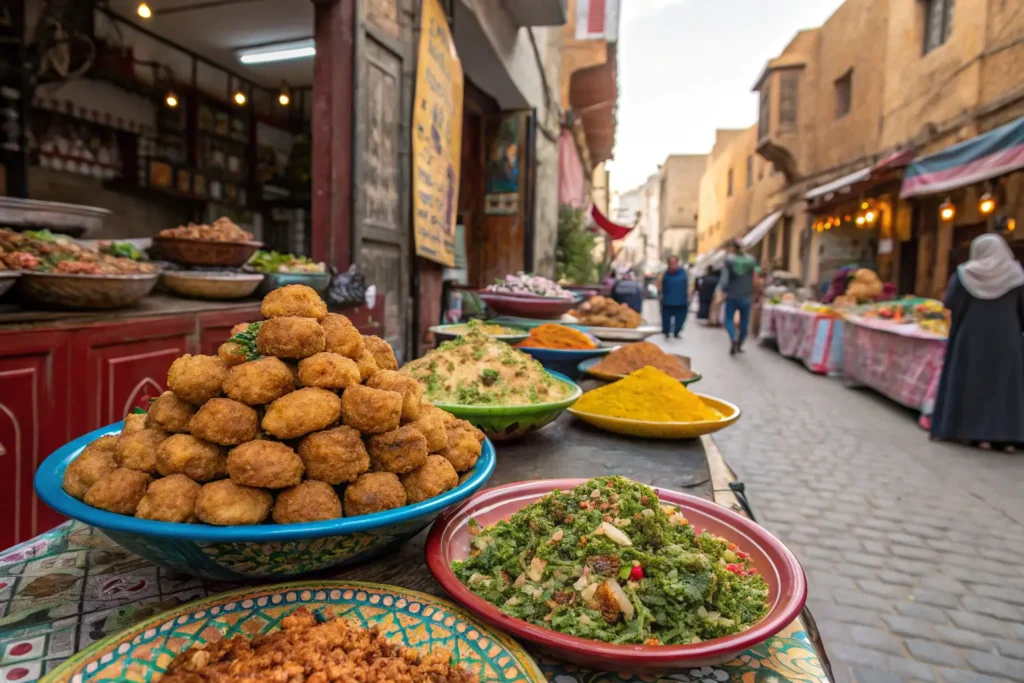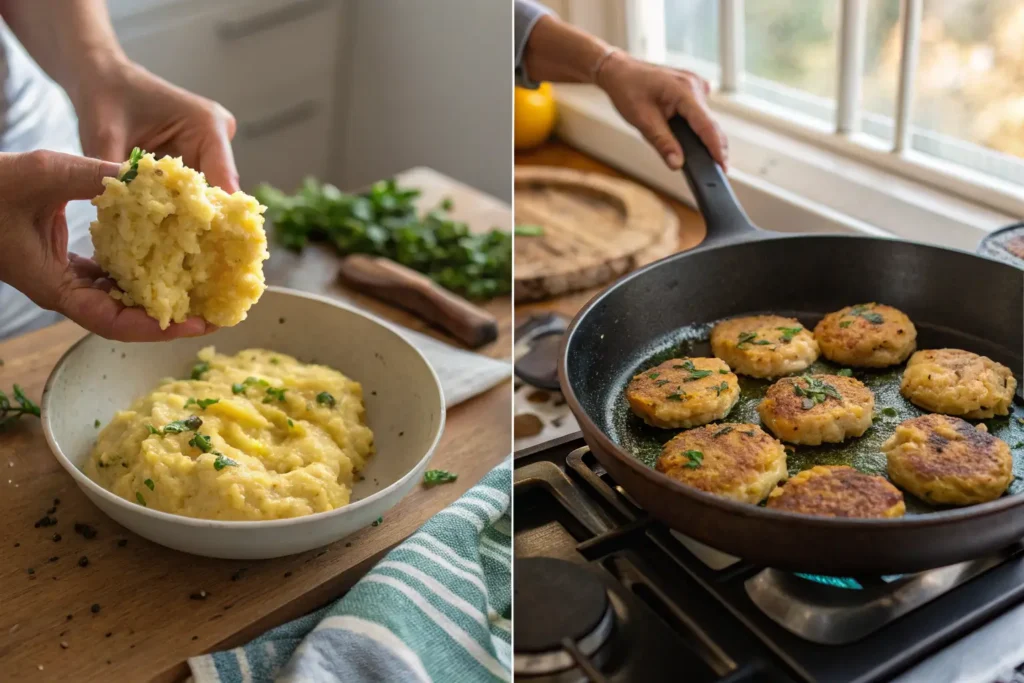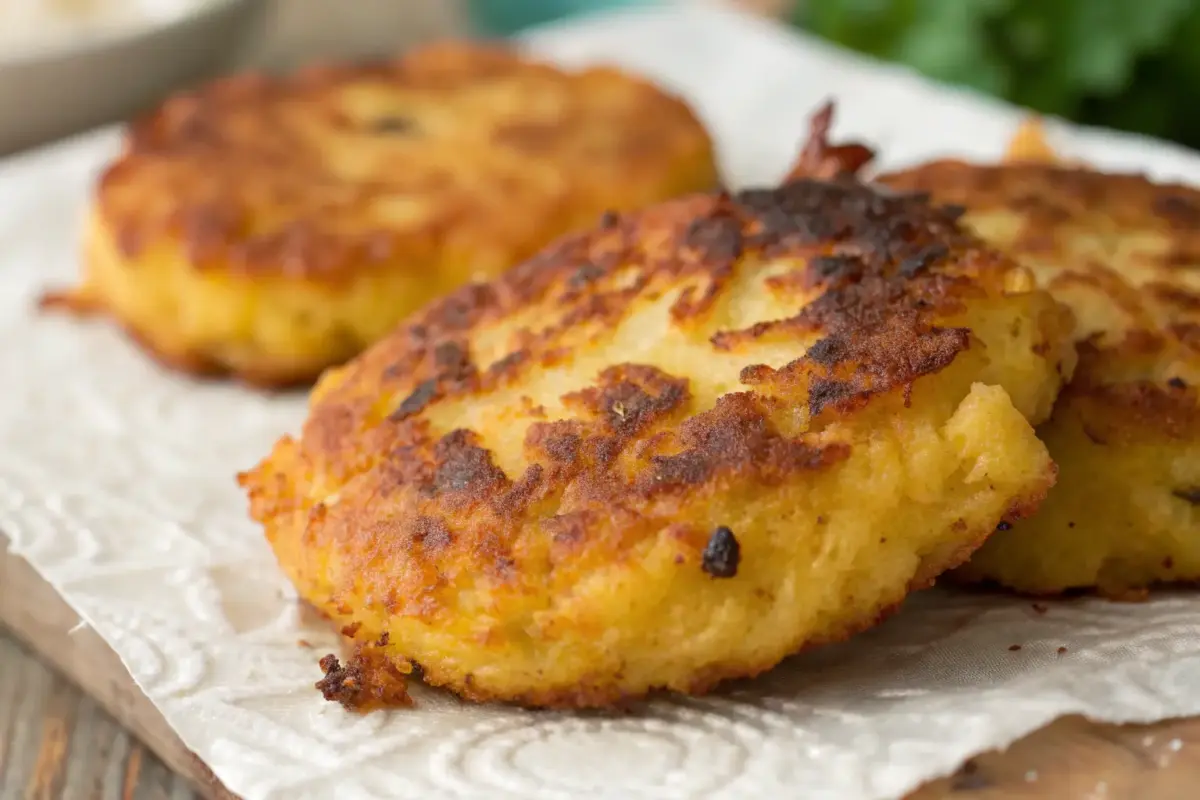Introduction to Maakouda
What Is the History of the Maakouda?
What is the history of the Maakouda? This golden, crispy potato fritter has a long and flavorful past that connects people across North Africa. As one of the region’s most beloved dishes, the Maakouda is a cultural treasure that reflects the culinary traditions of its people. Whether you’re enjoying it as a street food snack or a homemade comfort food, its story is just as rich as its taste.
Why Understanding the History of Maakouda Matters
Understanding what is the history of the Maakouda allows us to appreciate its role in North African culture. This dish isn’t just food—it’s a reflection of the region’s history, its people, and their creativity in the kitchen. By learning about its roots, we honor the traditions that have kept Maakouda on our tables for generations.
The Earliest Origins of Maakouda
Tracing the Roots in North African Cuisine
When exploring the origins of Maakouda, it’s fascinating to see how simple ingredients like potatoes became culinary staples in North Africa, just as they are in dishes like Passover Potato Pie, which also showcases their versatility in traditional recipes.
Influences from Berber Culinary Practices
The Berber people were instrumental in shaping what is the history of the Maakouda. Their cooking traditions emphasize hearty, flavorful dishes that rely on locally available ingredients. The use of bold spices and fresh herbs in Maakouda reflects this heritage, showing how Berber ingenuity has influenced North African cuisine.
Maakouda in the Context of Moroccan Culture

The Role of Maakouda in Moroccan Street Food
In Morocco, Maakouda is a street food superstar. When exploring what is the history of the Maakouda, you’ll find that its popularity grew from its accessibility and satisfying flavor. Vendors across cities like Marrakech and Casablanca serve these fritters in sandwiches or on their own, providing a quick yet flavorful meal that captures the essence of Moroccan street food culture.
How Maakouda Became a Symbol of Tradition
What is the history of the Maakouda without mentioning its role in family traditions? Passed down through generations, the art of making Maakouda has become a way to connect with loved ones. Families gather to prepare and enjoy this dish, preserving its place as a symbol of community and heritage.
Historical Ingredients and Preparation Methods

The Use of Potatoes and Simple Ingredients
Potatoes are at the heart of what is the history of the Maakouda. Introduced to North Africa centuries ago, they became a versatile ingredient in many traditional dishes. Combined with spices like cumin, turmeric, and parsley, potatoes form the base of Maakouda, creating a dish that’s both simple and flavorful.
Traditional Cooking Techniques
Traditional preparation methods also play a key role in what is the history of the Maakouda. Frying the patties in hot oil ensures a crispy, golden crust that contrasts perfectly with the soft, spiced interior. While modern cooking techniques may offer new twists, the traditional approach remains a beloved way to make this iconic dish.
Colonial Influence on Maakouda
French Colonial Impact on North African Cuisine
The French colonial period left an undeniable mark on North African cuisine, and Maakouda was no exception. Potatoes, introduced by European settlers, became a staple ingredient in many local dishes. During this time, French cooking methods also influenced how traditional recipes were prepared, adding a touch of refinement to simple, rustic dishes like Maakouda. The result? A fritter that was both grounded in tradition and subtly adapted to new tastes.
How Colonization Affected the Spread of Maakouda
As colonial powers connected North Africa with other parts of the world, Maakouda began to travel. Soldiers, traders, and migrants carried this humble dish to new regions, introducing it to different culinary contexts. Over time, Maakouda became more than just a local favorite—it evolved into a dish that resonated with people far beyond its place of origin. This cross-cultural exchange helped solidify its reputation as a versatile and adaptable snack.
Regional Variations Across North Africa
Differences Between Moroccan and Algerian Maakouda
While Maakouda is beloved across North Africa, each country adds its own twist, much like regional spins on other comforting dishes such as Potato Kugel Substitutes. These variations highlight the creativity in adapting recipes to local preferences.
Unique Twists in Tunisian Maakouda
In Tunisia, Maakouda takes on an even spicier personality. Tunisians are known for their love of bold, fiery flavors, and they often add harissa or chili flakes to the potato mixture. This version of Maakouda is not just a snack but also a favorite during Ramadan, served alongside other traditional dishes. It’s a great example of how a single recipe can adapt to the culinary identity of different regions.
Maakouda in Modern Cuisine
Contemporary Adaptations and Innovations
In today’s kitchens, Maakouda has found new life with creative twists. Some chefs are baking it instead of frying, catering to health-conscious diners. Others are experimenting with fillings like cheese, minced meat, or even seafood to give the classic recipe a modern update. These innovations show that while Maakouda remains rooted in tradition, it has plenty of room to evolve and surprise.
How Globalization Shaped Its Popularity
With the rise of globalization, Maakouda has crossed borders like never before. It’s now featured in international food festivals, YouTube cooking channels, and even fusion restaurants. The dish’s simplicity makes it accessible to cooks of all skill levels, while its rich history and bold flavors make it a crowd-pleaser. Thanks to the internet and social media, Maakouda has become a global ambassador for North African cuisine.
The Role of Maakouda in Celebrations and Gatherings
Significance in Religious and Cultural Events
Maakouda holds a special place in many North African celebrations, from Ramadan to family reunions. During religious festivals, it’s often served alongside traditional soups and stews, creating a comforting and festive meal. Its presence at these gatherings highlights how food can bring people together, fostering a sense of connection and shared joy.
How Maakouda Connects Generations
For many families, Maakouda is more than just food—it’s a tradition passed down through generations. Parents teach their children the art of making the perfect fritter, sharing stories and laughs along the way. This simple act of cooking together creates lasting memories and ensures that the recipe—and its cultural significance—lives on.
Culinary Techniques Preserved Over Time
Traditional Versus Modern Preparation Styles
Although modern adaptations of Maakouda are becoming more common, many cooks still prefer the traditional methods. Hand-mashing potatoes, using fresh herbs, and frying in hot oil are techniques that have stood the test of time. While modern gadgets and shortcuts might make the process quicker, there’s something deeply satisfying about sticking to the old ways.
Challenges in Maintaining Authenticity
As Maakouda gains popularity worldwide, there’s always a risk of losing its authenticity. Some recipes stray far from the original, omitting key spices or overcomplicating the preparation. While innovation is exciting, it’s important to honor the dish’s roots and remember the simplicity that makes Maakouda so special. After all, its charm lies in its humble beginnings.
Maakouda Beyond North Africa
How the Dish Reached European and Middle Eastern Palates
As North African communities emigrated to Europe and the Middle East, they brought their beloved Maakouda with them. In France, for instance, it’s not uncommon to find Maakouda served alongside couscous in vibrant Maghrebi neighborhoods. Similarly, in Middle Eastern countries, the dish has found its way into menus as a complementary snack, often paired with dips like tahini or hummus. This widespread popularity highlights how Maakouda bridges cultural divides through food.
The Role of Diaspora in Spreading Maakouda
The North African diaspora has played a huge role in making Maakouda known around the globe. Families who’ve settled abroad often share their recipes with neighbors and friends, while North African restaurants introduce the dish to curious diners. This organic spread has made Maakouda a cherished global dish, offering a taste of home for many while sparking curiosity in others.
Health and Nutritional Perspective
Benefits of Its Core Ingredients
Potatoes, the main ingredient in Maakouda, are a fantastic source of energy, packed with vitamins like B6 and C. The addition of spices like cumin and turmeric not only boosts flavor but also adds potential anti-inflammatory and digestive benefits. When prepared thoughtfully, Maakouda can be a wholesome and satisfying snack that fits into a balanced diet.
Balancing Tradition with Modern Health Trends
While traditional Maakouda is fried, many modern cooks are experimenting with healthier preparation methods, like baking or air frying. These methods reduce oil content while preserving the dish’s delicious flavors. It’s a testament to Maakouda’s versatility—adapting to contemporary dietary trends without losing its soul. With a little creativity, you can enjoy the dish guilt-free!
“Potatoes, the primary ingredient in Maakouda, offer energy and essential vitamins. Their versatility is celebrated in other recipes, such as Passover Potato Pie, proving their adaptability in both cultural and modern contexts.”
Popular Recipes and Cooking Tips
Step-by-Step Traditional Maakouda Recipe
To make classic Maakouda, start by boiling potatoes until soft. Mash them with spices like cumin, turmeric, and fresh parsley. Add an egg to bind the mixture, shape it into patties, and coat with a light dusting of flour. Heat oil in a pan and fry until golden brown on both sides. Serve hot with harissa or your favorite dipping sauce—simple and delicious!
Variations for a Global Audience
For a global twist, try adding cheese to the potato mixture for a gooey center or stuffing the patties with minced meat. You can also play with the spices—think smoked paprika for a Spanish vibe or curry powder for an Indian-inspired version. These creative adaptations showcase Maakouda’s ability to resonate with diverse palates while staying true to its roots.
The Future of Maakouda
Preserving Its Heritage in a Rapidly Changing World
As the world becomes more interconnected, there’s an opportunity to preserve Maakouda’s rich heritage while celebrating its adaptability. Food historians and culinary enthusiasts alike are documenting traditional recipes, ensuring that the dish’s origins are never lost. It’s a way to honor the generations who’ve kept Maakouda alive and thriving.
Opportunities for Cultural Exchange Through Food
Maakouda’s global popularity opens doors for deeper cultural understanding. By sharing this dish, North Africans invite the world to experience a piece of their culinary story. Similarly, those who try Maakouda can learn about the history and traditions behind it. This mutual exchange fosters connection, proving that food truly has the power to unite us all.
FAQs
What is the history of the Teskey Brothers?
The Teskey Brothers, a soul band from Australia, have roots in classic blues and soul music. They began their journey in the early 2000s, gaining international recognition for their heartfelt sound and vintage-inspired style. Their music draws on themes of love, resilience, and connection, blending timeless influences with modern appeal.
What is the history of the Taconic?
The Taconic region, nestled in the northeastern United States, has a history rich in natural beauty and early American settlement. Known for the Taconic Mountains, the area was originally inhabited by Native American tribes. Over time, it became a hub for farming and trade, with its scenic landscapes inspiring countless artists and nature enthusiasts.
What is the history of potato pancakes?
Potato pancakes have been a beloved dish across many cultures for centuries. In Eastern Europe, they are known as latkes and are a staple during Hanukkah celebrations. In Germany, Kartoffelpuffer is enjoyed as a hearty snack, often with applesauce or sour cream. The concept of frying grated or mashed potatoes has universal appeal, making it a timeless comfort food.
What is the history of Maori potatoes?
Maori potatoes, or taewa, are an integral part of New Zealand’s indigenous culinary heritage. Introduced in the late 18th century, these colorful, nutrient-rich tubers quickly became a staple for the Maori people. Known for their unique flavors and cultural significance, they remain a cherished symbol of tradition and sustainability in Maori cuisine.
Conclusion
Why Maakouda Will Always Be a Culinary Treasure
Maakouda is more than just a dish—it’s a connection to North African culture, a symbol of resilience, and a bridge between generations. Its simple yet satisfying flavors make it a favorite for anyone who tries it, proving that great food doesn’t need to be complicated.
Encouraging a Deeper Appreciation of Its History
By learning about Maakouda’s origins, evolution, and global journey, we can appreciate its role in shaping culinary traditions. It’s a reminder that food carries stories, and every bite of Maakouda tells a tale of community, creativity, and heritage. So, next time you enjoy this golden fritter, take a moment to savor the history behind it—it’s worth every crumb.

